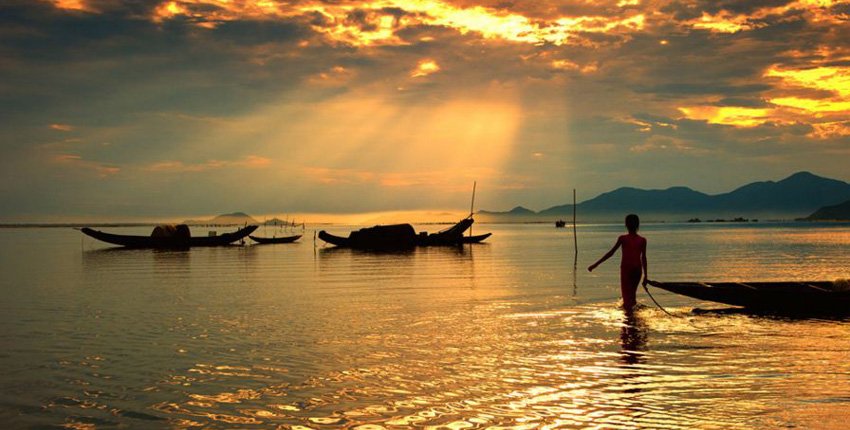
Welcome to Tam Giang Lagoon, a hidden gem nestled along the central coast of Vietnam. Stretching across a vast area of over 70 square kilometres, Tam Giang Lagoon is not only the largest lagoon in Vietnam but also a breathtaking natural landscape that offers tranquillity, stunning vistas, and a unique cultural experience. Join us on a travel guide-style exploration of Tam Giang Lagoon as we delve into its scenic beauty, diverse ecosystem, and the immersive activities that await.
The natural beauty of Tam Giang Lagoon will mesmerize you. The lagoon’s calm waters, fringed by lush mangrove forests and picturesque fishing villages, create a serene and idyllic atmosphere. Take a boat ride across the lagoon to fully appreciate the breathtaking panoramic views, with the distant Truong Son Mountain Range serving as a stunning backdrop. Witness the interplay of light and shadow as the sun rises or sets over the lagoon, painting the sky with vibrant hues.
Tam Giang Lagoon is a haven for biodiversity and supports a rich ecosystem. The lagoon is home to numerous species of fish, shrimp, and mollusks, making it an important fishing ground for the local communities. Bird enthusiasts will also delight in the presence of migratory birds that visit the lagoon during certain seasons, including the rare spoon-billed sandpiper. Explore the lagoon’s diverse habitats, from wetlands to sandy beaches, and appreciate the delicate balance of nature in this unique ecosystem.
Immerse yourself in the local culture and way of life by visiting the traditional fishing villages that dot the shores of Tam Giang Lagoon. Witness the daily activities of the fishermen as they cast their nets or tend to their fishing boats. Engage with the friendly locals, learn about their fishing techniques, and gain insights into the intricacies of their livelihoods. Some villages offer homestay experiences, allowing you to immerse yourself further in the local culture and enjoy fresh seafood delicacies.
Tam Giang Lagoon offers a range of activities that allow visitors to engage with the lagoon’s natural beauty and the vibrant local community. Join a fishing excursion and experience the thrill of catching fish alongside the local fishermen. Participate in a traditional basket boat tour, where you can navigate the narrow waterways and explore the mangrove forests up close. Additionally, you can enjoy a relaxing bike ride along the lagoon’s scenic paths, stopping at viewpoints and local markets along the way.
Indulge in the flavors of the region by sampling the fresh seafood delicacies that Tam Giang Lagoon has to offer. Enjoy a sumptuous seafood feast at one of the local restaurants, where you can savor the catch of the day prepared in various delectable styles. Don’t miss the opportunity to try the specialty of the lagoon, “ca linh” (linh fish), known for its delicate taste and tender texture. Seafood lovers will be in culinary heaven as they explore the local gastronomy.
Tam Giang Lagoon offers a serene escape and a chance to connect with nature and the vibrant local communities. Whether if you’re captivated by the lagoon’s scenic beauty, intrigued by its ecological diversity, or eager to immerse yourself in the local culture and flavors, Tam Giang Lagoon promises a memorable experience. Embark on a journey of tranquillity, exploration, and cultural immersion as you discover the largest lagoon in Vietnam and create lasting memories in this hidden gem of central Vietnam.
Subscribe to see secret deals prices drop the moment you sign up!
